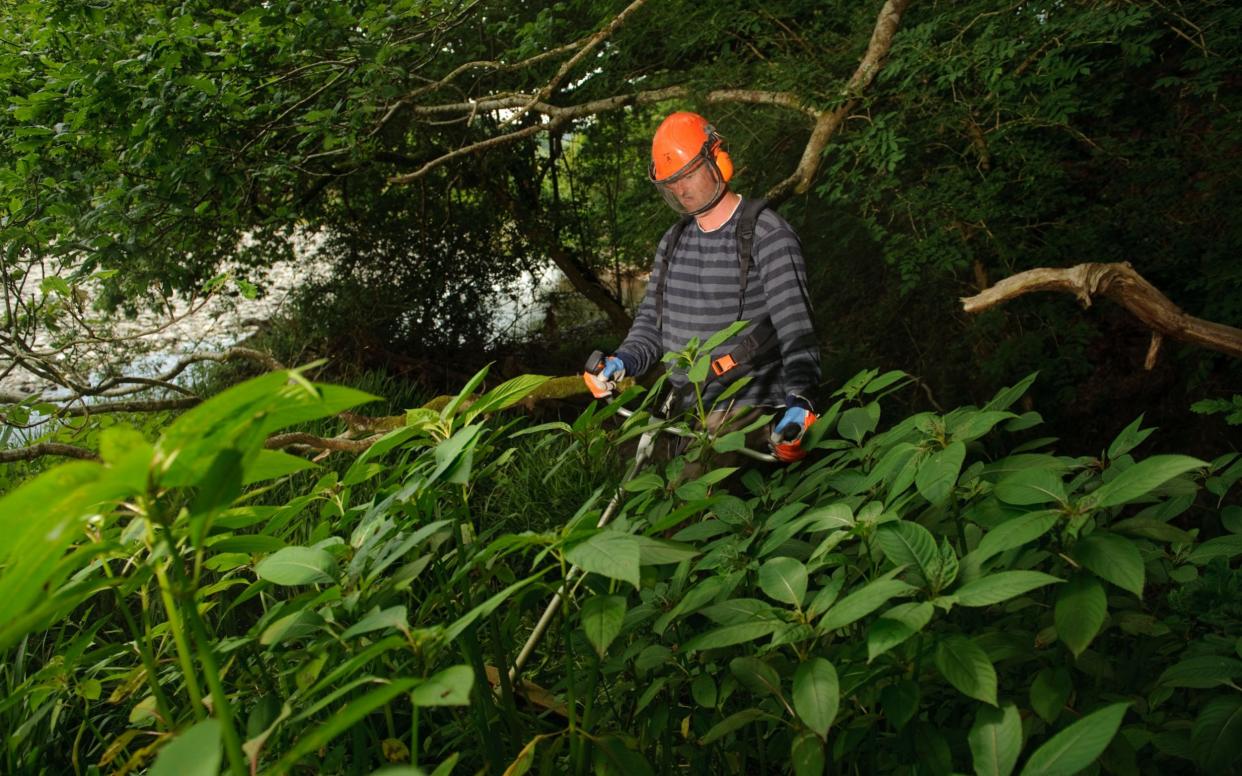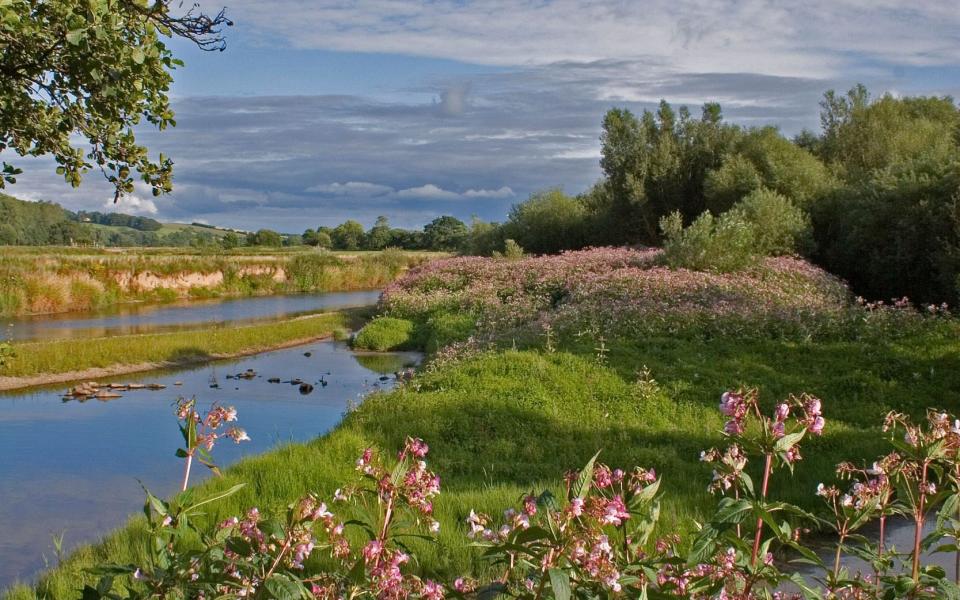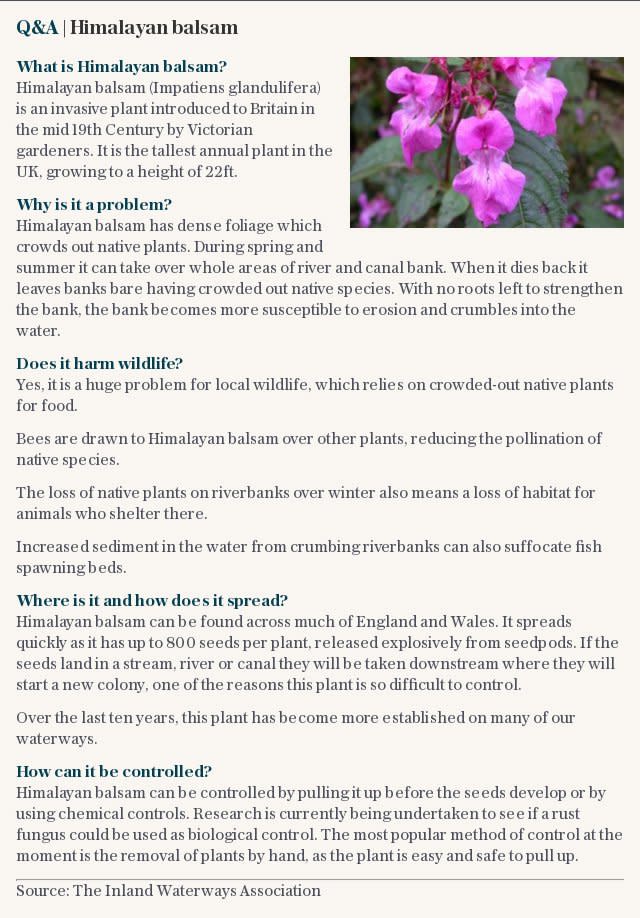Himalayan balsam now so widespread it needs tackling

The spread of invasive Himalayan balsam is now so bad that drivers who see it growing along roadside verges are being encouraged to stop and pull it out or contact the council immediately.
The pretty pink plant was first introduced to Britain as an ornamental in 1839, but soon found its way out of gardens and into the countryside, where it has been spreading rapidly ever since.
Until now it has largely stuck to waterways, such as canals, but increasingly it is moving into verges and hedgerows - where it has a greater chance of spreading because of walkers and traffic.

According to the Royal Horticultural Society each plant can produce 800 seeds a year and their explosive pods can shoot seeds up to 22ft (7m) away, which then stick to shoes and car tyres. Bees are also attracted to the flowers and can spread the seeds widely.
Once established Himalayan balsam, which can grow up to 10ft in height, outcompetes native species, erodes riverbanks, and clogs up rivers and streams leading to flooding. It is now widespread throughout Britain.
Ecologist Louise Wooley, who organises annual ‘balsam bashing’ events in Devon, said: “Every year Himalayan balsam grows exponentially and it’s really reached a point where people are starting to notice it everywhere and it will reach peak catastrophic levels if we don’t do something about it
“It used to be just seen along waterways but now it’s seen along roads. People are driving along and seeing vast swathes of it now and the sooner you get it dealt with the better so if you see it you should stop and try and get it out yourself.
“It’s an annual plant so if you snap the plant and just leave it in a pile it will die off quickly before it can seed. We need more people to be getting out there and getting it out of the ground.”
A recent study by Durham University found that Britain is one of the worst areas in the world for invasive species - with Himalayan balsam cited as a major problem.
Islands and mainland coastal regions often contain higher numbers of established alien plants and animals, because they areas have major points of entry like ports.

This month, scores of local groups across the country have been scouring riversides and road verges to remove the plant. The ninth annual 3 Rivers Clean Up event for the Ravensbourne, Pool and Quaggy rivers in London has just finished following a three-week blitz of waterways around the capital. Similar projects are currently taking place in Devon, Yorkshire, Shropshire, West Sussex and Cumbria.
"It needs to be cleared away every year," Paul Greaves, river action group co-ordinator at Eden Rivers Trust in Cumbria, a county prone to flooding during wet weather.
"When this area floods, the water flows through here and helps to carry the seeds on. It's important that we keep on top of the problem."
This species is listed on Schedule 9 of the Wildlife and Countryside Act in England and Wales which makes it an offence to plant or allow the species to grow in the wild. But Himalayan balsam is so widespread it is becoming an increasing challenge to tackle.

Dr Trevor Dines, Botanical Specialist at charity Plantlife, said if people see the plant they should contact their council immediately.
“Anecdotally people are reporting that Himalayan balsam seems to be moving into drier situations than before – as if it’s adapting to drier soils.
“It used to be confined to ditches, ponds, canals and riversides for example but it is increasingly being seen on just slightly damp ground, such as road verges and hedgerows with wet or damp soil.”
To fight Himalayan balsam, plants must be chopped down, or pulled up as they come into flower in June or July. The plant is an annual, so if caught early it quickly vanishes.
But experts say even mowing verges and roadsides often does not catch all the plants, and they can quickly regain ground of even just a few are allowed to seed.
“Control is difficult, firstly because it’s very difficult to chop down or pull all plants (it often needs lots of volunteers to get each plant) and secondly the seeds often keep arriving from neighbouring areas (such as upriver or from neighbouring land you don’t own),” added Dr Dines
“On roadsides, people should let the council know.”

 Yahoo News
Yahoo News 
